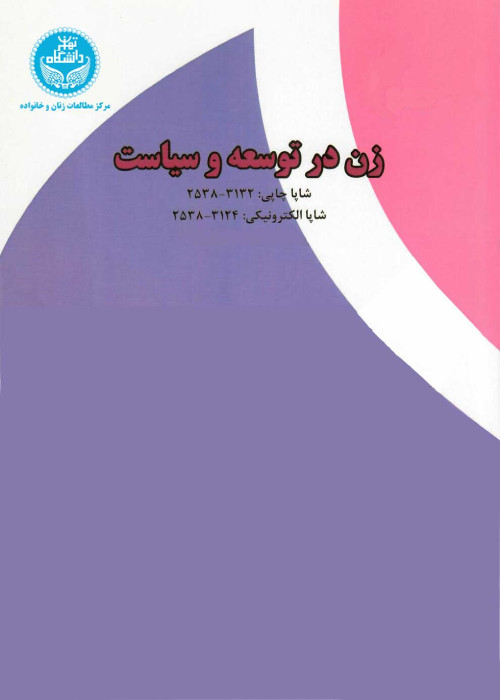Women's human capital and fertility convergence in Asian countries
Author(s):
Abstract:
World fertility has declined dramatically during the past fifty years. Although fertility in developed countries decreased to very low levels until 1970 and mid 1980, but Asian countries experienced different fertility trends during the last 50 years. Today, different regions are experiencing different fertility levels in Asia. Despite diversity in fertility levels, tremendous fertility decline has been experienced during the last three decades. Regarding ethnical, cultural and religious diversity of Asian countries and the fact that different countries have experienced modernization and socio-economic development unequally, it is necessary to study fertility levels and role of women as human capital. This study is a secondary analysis. Statistical population consists of 24 East, South East, and South Central Asian countries. The data are taken from United Nations population Division, Asia Research Institute (ARI) and International Institute for Applied System Analysis (IIASA). The aim of this paper is to study the fertility levels and trends of these countries during 1970-2010, their convergence with world fertility, timing and intensity of fertility reduction, and finally changes in Women’s Human Capital (WHC) and its role in fertility convergence controlling the effect of contraception. This study covers two different periods of time. The research focused on the years 1970-2010 in order to explain levels, trends and fertility convergence in studied countries. Similarly the research focused on the years 1970 and 2007 to shed light on the role of women’s human capital on fertility changes. Variables includes women’s human capital index (WHCI) and modern contraception prevalence rate. The study utilized of factor analysis for constructing the index of women’s human capital.Results show that more than 70 percent of countries were in natural fertility situation in the first half of 1970s. After 1970, the difference between countries fertility levels and world fertility has narrowed gradually, so that from 1990, in more than 85 percent of countries fertility rates reduced to the rates lower than the world fertility levels. Pakistan, Laos, Tajikistan, and Philippine are the only countries with higher fertility levels comparing to the world in 2005-2010, and the value of their index of convergence is negative. According to this study, there are apparent differences among countries in women’s Human Capital in 1970 and 2010. Results of the correlation analysis show that the intensity of the correlation between WHC and fertility in 2007 is more than the corresponding value in 1970. In fact, despite the differences in Women’s Human Capital levels, countries had a homogenous fertility rate in 2007. Findings support the results of the previous research about the convergence of fertility in different socio-economic contexts.
Keywords:
Language:
Persian
Published:
Women in Development and Politics, Volume:8 Issue: 2, 2010
Pages:
163 to 188
magiran.com/p745528
دانلود و مطالعه متن این مقاله با یکی از روشهای زیر امکان پذیر است:
اشتراک شخصی
با عضویت و پرداخت آنلاین حق اشتراک یکساله به مبلغ 1,390,000ريال میتوانید 70 عنوان مطلب دانلود کنید!
اشتراک سازمانی
به کتابخانه دانشگاه یا محل کار خود پیشنهاد کنید تا اشتراک سازمانی این پایگاه را برای دسترسی نامحدود همه کاربران به متن مطالب تهیه نمایند!
توجه!
- حق عضویت دریافتی صرف حمایت از نشریات عضو و نگهداری، تکمیل و توسعه مگیران میشود.
- پرداخت حق اشتراک و دانلود مقالات اجازه بازنشر آن در سایر رسانههای چاپی و دیجیتال را به کاربر نمیدهد.
In order to view content subscription is required
Personal subscription
Subscribe magiran.com for 70 € euros via PayPal and download 70 articles during a year.
Organization subscription
Please contact us to subscribe your university or library for unlimited access!



